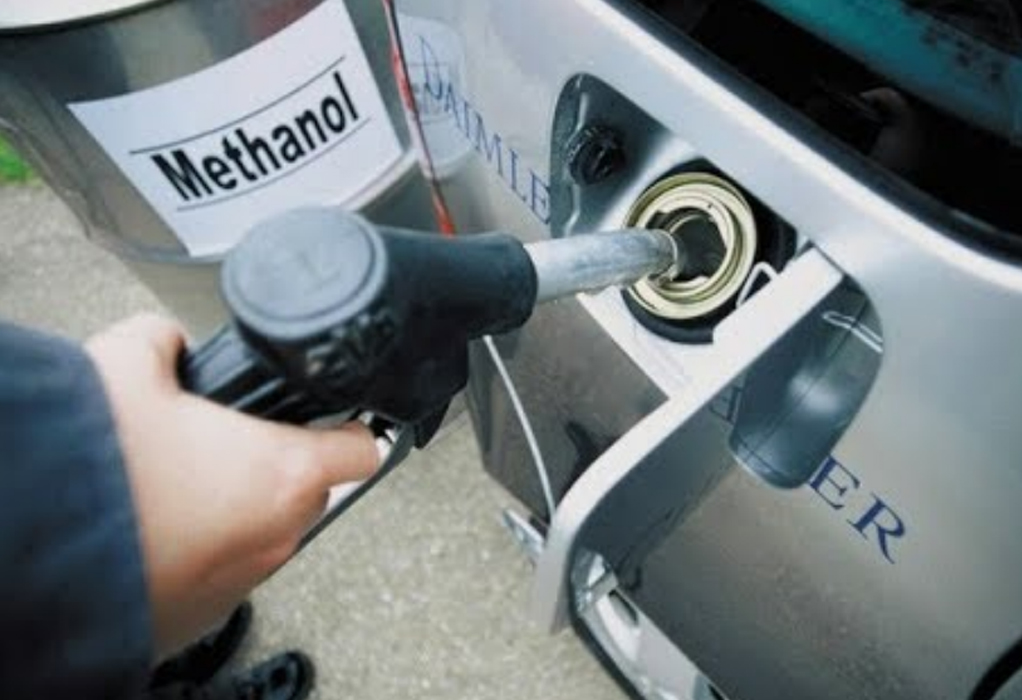In what may push the agenda to promote the adoption of hydrogen as an alternative fuel and help the country meet the carbon emission targets under the latest COP26 agreement, experts have found a way to reduce the overall cost of hydrogen production and transportation by more than half.
Methanol, used as a clean fuel in various automotive, shipping and industrial applications, can be used as a liquid carrier of hydrogen in normal containers at ambient temperature, unlike hydrogen that requires specialised and costly cryogenic containers for transport. A methanol molecule has the highest hydrogen to carbon ratio compared to any liquid fuel, and its use as a hydrogen carrier not just does away with the cost of transporting hydrogen, but also reduces the conversion cost by more than 90%. Green hydrogen is presently produced by electrolysis of water using renewable power, which is a very costly process, unlike production of hydrogen from methanol. To put it into perspective, the production of one kg of hydrogen requires 55 kwhr of renewable energy, while methanol can be reformed into 1 kg of hydrogen with 0.04 kwhr.
According to a report from the Methanol Institute, a global association for methanol trade, methanol fuel cells use hydrogen as a fuel to produce clean electricity. Methanol can be easily reformed into hydrogen through a catalytic process at a temperature of 200-300°C. Large reformers or converters can reform methanol at fueling stations to generate hydrogen for fuel cell cars. Reformers can also be deployed alongside fuel cells to provide clean electricity to telecom towers, construction sites, and ocean buoys.
Timothy Chan, assistant director of government & public affairs, Asia & Middle East at Methanol Institute, tells FE that “in electric vehicles, the fuel cell technology functions as a range extender, requiring minimal maintenance, and occupying smaller space on the vehicle. The fuel cells are deployed for on-board reforming for heavy-duty vehicles like trucks, ships, and trains.”
India currently produces 1 million metric tonne of methanol per annum, with demand projected to grow to 46.75 lakh tonnes by 2030. The NITI Aayog recently published a paper that says methanol blending is more cost competitive than ethanol blending, supporting its use as a cost-effective alternative fuel.
Entities like the Coal India Limited (CIL) and the NTPC are already taking steps to produce and promote methanol. NTPC recently asked Carbon Clean, and Green Power International to set up a carbon-dioxide to methanol demonstration plant at NTPC Vindhyachal. In 2018, Assam Petrochemicals (APL), together with the government of Assam and NITI Aayog, rolled out 300 methanol cookstoves for APL colony residents, eliciting a good response. Gujarat State Fertilisers and Chemicals has resumed efforts to meet the anticipated domestic demand for methanol, while the Rashtriya Chemicals and Fertilisers has restarted its methanol plant at Trombay.
Shubhranshu Patanaik and Debasish Mishra, partners at Deloitte India, say that while technologies exist for the use of alternative green fuels, the biggest challenge is to create demand for them at existing high costs, with a slew of policies being needed to incentivise their production and create demand on a mass scale.
“Methanol as a carrier of hydrogen for long-haul vehicles is a concept that is at least 5-6 years away still. Not many industries are looking at use of pipelines to transport hydrogen as it is highly inflammable, even as transporting it through containers is very costly. Given these circumstances, methanol and ammonia are two options that would be looked at for transporting hydrogen,” Patanaik says.
Source: Financial Express
Tags: Clean fuel, COP26, Hydrogen, Methanol



Recent Posts
Hygenco Commissions Maharashtra’s First Green Hydrogen and Oxygen Facility to Power STL’s Net Zero Goals
India Invites Second Round of R&D Proposals Under ₹4 Billion Green Hydrogen Mission
BMTC Adds 148 Tata Electric Buses to Bengaluru Fleet, Strengthens Green Mobility Drive
MITSUI E&S Deploys Hydrogen Fuel-Cell RTG Crane at Yokohama’s Minami Honmoku Terminal
WinGD’s first ammonia-fuelled engine installed on EXMAR vessels
DP World and Asian Terminals Inc deploy first fleet of electric internal transfer vehicles in the Philippines
Lloyd’s Register Decarbonisation Hub Joins Mærsk Mc-Kinney Møller Center as Knowledge Partner
Wärtsilä engines selected to deliver reliable power for US data center